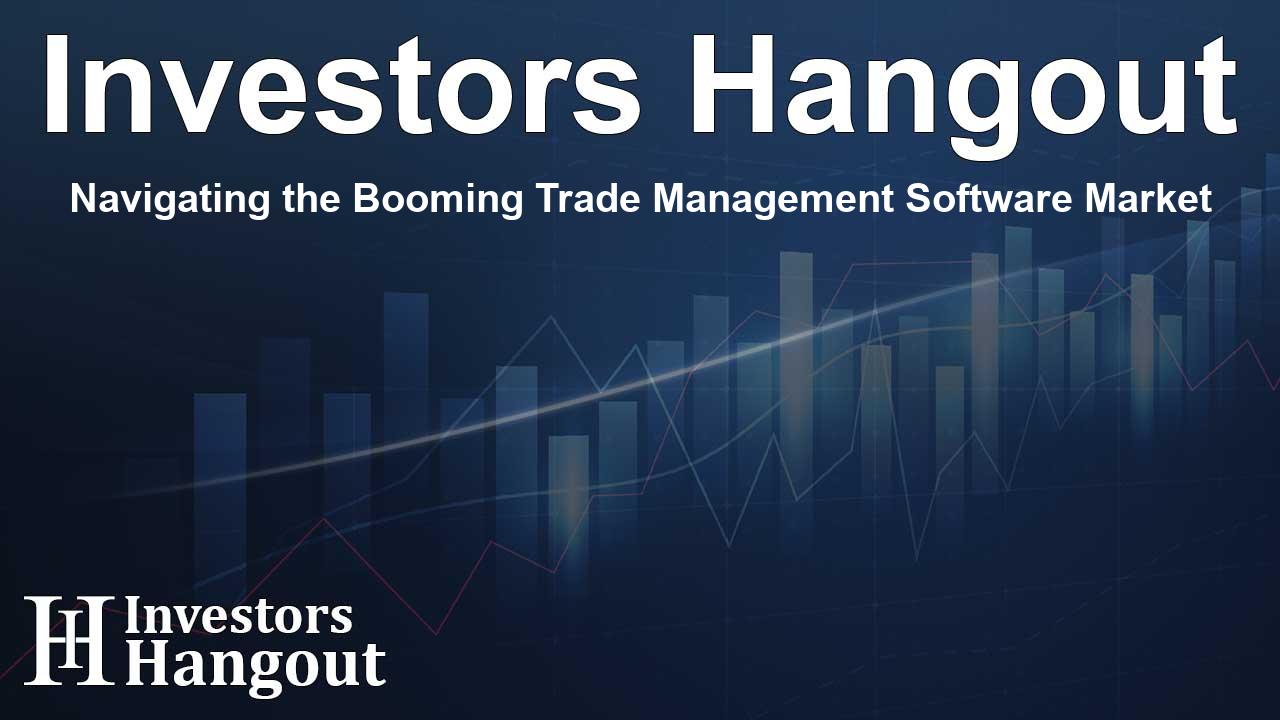Navigating the Booming Trade Management Software Market

Understanding the Growth of Trade Management Software
Trade Management Software (TMS) industry is currently witnessing a significant transformation. As enterprises grapple with the ever-evolving landscape of global trade, the market is set to experience remarkable growth. At present, the market is valued at approximately USD 1.1 billion, with projections suggesting it will expand to USD 2.8 billion by 2032. The driving factors behind this surge include increasingly complex global trade compliance requirements and technological advancements, particularly in artificial intelligence (AI) and cloud computing.
Market Dynamics and Drivers
The TMS market is being fueled primarily by the growing complexity of international trade regulations. Companies are now more than ever seeking efficient compliance solutions to manage risks and improve operational efficiency across their supply chains. The shift towards digitization and automation within business processes fosters demand for sophisticated trade management tools, thus accelerating market growth.
The Rise of Automation
Automation is reshaping trade processes, as businesses adopt TMS solutions to streamline operations and enhance risk management capabilities. The flexibility offered by cloud-based platforms is particularly appealing, providing companies with the capability to scale, reduce costs, and gain real-time data access—essential elements for navigating complex regulatory environments.
Current Market Landscape
As we analyze the current TMS landscape, major players such as Oracle and SAP are at the forefront, continuously innovating to address the unique challenges of the industry. The demand for cloud-based solutions has taken precedence, capturing over 60% of the market share due to their cost-effective nature and ease of implementation. With the ability to easily integrate across various operational functions, these platforms play a crucial role in managing robust supply chains.
Segment Analysis
The Trade Compliance segment stands out as the largest contributor to market share, driven by the stringent enforcement of regulations that require companies to automate compliance processes effectively. Large enterprises, holding over 53.75% of the market, are leveraging these sophisticated tools to navigate their intricate supply chains, while small and medium-sized enterprises (SMEs) are emerging quickly, propelled by affordable cloud solutions.
Regional Insights
North America dominates, accounting for 35.6% of the market share in 2023. The region benefits from strong technological infrastructure and high adoption rates of advanced TMS solutions. Meanwhile, Asia-Pacific is rapidly evolving as a key player, driven by increased trade activities and significant technological investments. Key nations like China and India are leading the charge, investing in TMS tools that enhance operational efficiency.
Recent Innovations and Developments
Recent developments in the TMS space highlight a shift towards enhancing compliance capabilities and integrating advanced technologies. Notable innovations include SAP’s launch of an updated TMS, which features improved AI-driven analytics for better risk management, and Oracle’s introduction of machine learning algorithms to enhance trade compliance. These advancements indicate an industry that is not only growing but adapting to meet the future needs of global trade.
Conclusion and Key Takeaways
The Trade Management Software market is set for profound growth, propelled by the increasing complexities of trade compliance and advancements in technology. With cloud-based solutions leading the charge, large enterprises will continue to dominate the landscape, even as SMEs experience rapid growth through affordable technological advancements. As the industry progresses, staying abreast of developments will be vital for businesses looking to thrive in this competitive environment.
Frequently Asked Questions
What is the expected market size for Trade Management Software by 2032?
The Trade Management Software market is projected to reach USD 2.8 billion by 2032.
What are the primary drivers of growth in the TMS market?
Key drivers include increasing complexities in global trade regulations and advancements in technology like AI and cloud computing.
What role does automation play in the TMS market?
Automation helps streamline trade processes, enhance risk management, and improve operational efficiencies across supply chains.
Which region currently leads the TMS market?
North America leads the TMS market, accounting for the largest share due to its robust technological infrastructure.
How are SMEs impacting the Trade Management Software market?
While large enterprises dominate, SMEs are projected to grow rapidly as they benefit from affordable cloud-based TMS solutions.
About Investors Hangout
Investors Hangout is a leading online stock forum for financial discussion and learning, offering a wide range of free tools and resources. It draws in traders of all levels, who exchange market knowledge, investigate trading tactics, and keep an eye on industry developments in real time. Featuring financial articles, stock message boards, quotes, charts, company profiles, and live news updates. Through cooperative learning and a wealth of informational resources, it helps users from novices creating their first portfolios to experts honing their techniques. Join Investors Hangout today: https://investorshangout.com/
Disclaimer: The content of this article is solely for general informational purposes only; it does not represent legal, financial, or investment advice. Investors Hangout does not offer financial advice; the author is not a licensed financial advisor. Consult a qualified advisor before making any financial or investment decisions based on this article. The author's interpretation of publicly available data shapes the opinions presented here; as a result, they should not be taken as advice to purchase, sell, or hold any securities mentioned or any other investments. The author does not guarantee the accuracy, completeness, or timeliness of any material, providing it "as is." Information and market conditions may change; past performance is not indicative of future outcomes. If any of the material offered here is inaccurate, please contact us for corrections.